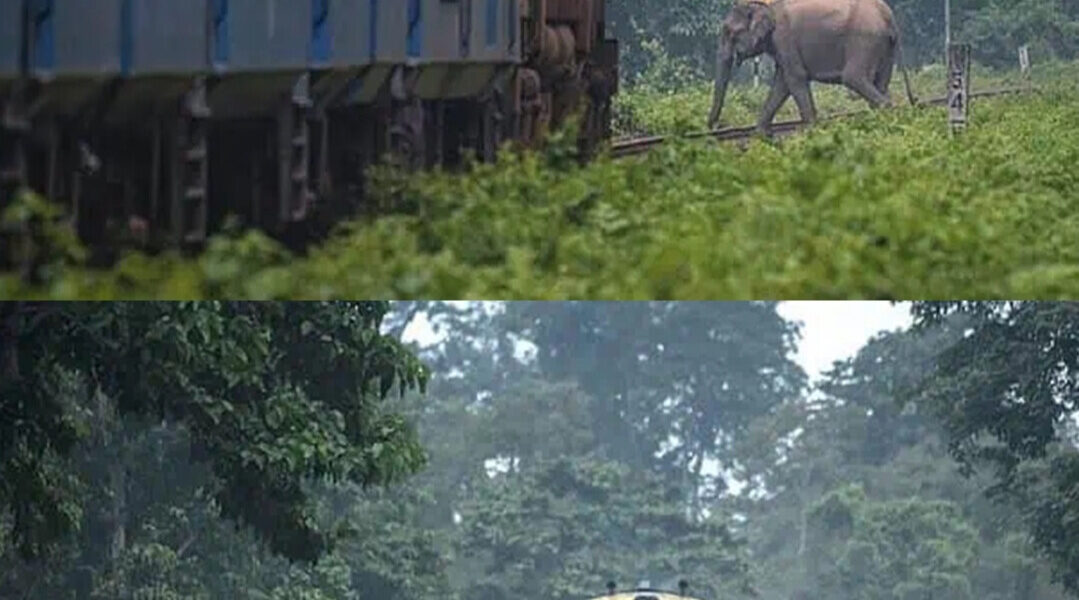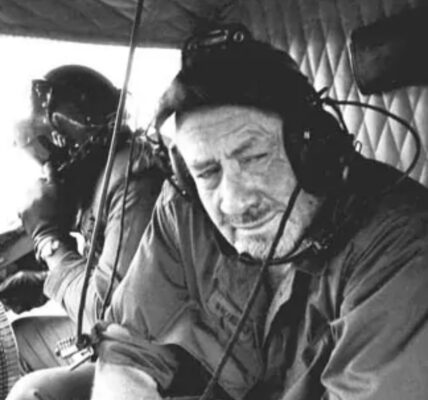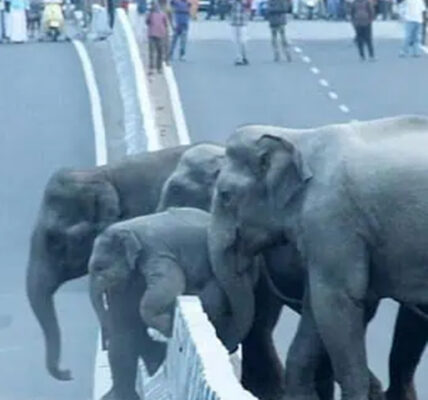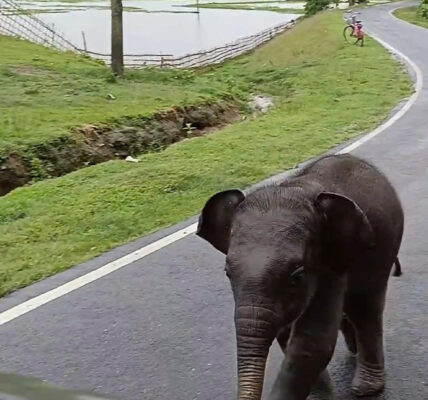In the hushed green of an Indian forest, silence was shattered by the metallic thunder of a train. On the tracks ahead, an elephant lumbered forward, unaware that death was bearing down at impossible speed. Wildlife photographer Rupak Dastidar captured the exact moment the giant nearly lost its life—a single second separating survival from tragedy.

The image is dramatic, but the reality behind it is far worse. For years, the tracks cutting through India’s forests have become death traps for elephants. These railway lines pass through sanctuaries, national parks, and protected areas—land that elephants once roamed freely but now navigate at terrible risk.
Since the tracks were modified, over 90 elephants have been killed in collisions. Their bodies have been left shattered on the rails, mourned not only by their herds but by villagers and forest officials who see these animals not as statistics but as sacred beings. Entire herds have been known to stand by fallen elephants, grieving in ways that feel heartbreakingly human.

The worst-hit stretches of track lie between Alipurduar and New Jalpaiguri, where heavy trains barrel through elephant corridors daily. To slow the destruction, authorities imposed speed limits—50 km/h in daylight, 25 km/h at night. These measures have reduced the numbers, but the danger is constant. Even one misstep, one late warning, can cost an elephant its life.
“This railway line has become a graveyard,” Rupak explained. “Elephants, Indian Gaurs, and countless other species risk death every day simply for existing in their natural home.”

Last year alone, tragedy struck again: two elephants were killed by a passenger train. Local villagers gathered, draped their bodies in flowers, and lit funeral pyres where they fell. It was both a farewell and a protest—a way of honoring lives lost to the relentless march of steel.
In just five years, at least 26 elephants have been killed near the Nepal border alone, with many more maimed or injured. For every life lost, countless calves grow up without mothers, herds grow smaller, and a species already under threat moves one step closer to decline.

The photograph of the near-miss is haunting not only because the elephant lived, but because so many others did not. It is a reminder of the fragile balance between human progress and wildlife survival, and of the price nature continues to pay when that balance tips too far.
In the blink of an eye, the train passed, and the elephant lived. But tomorrow, or the next day, another might not be so lucky.

This is not just the story of one elephant’s escape. It is the story of a species fighting for its place in a world where the tracks of industry run straight through their ancient paths.




